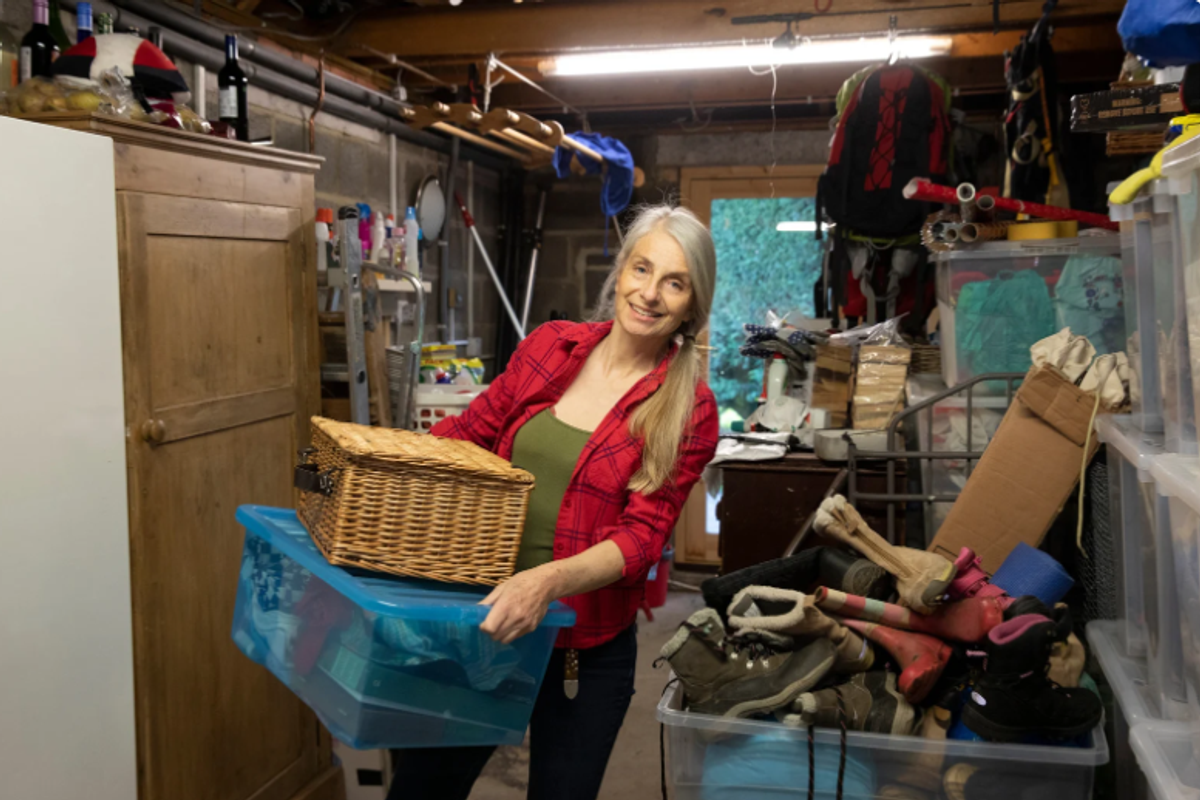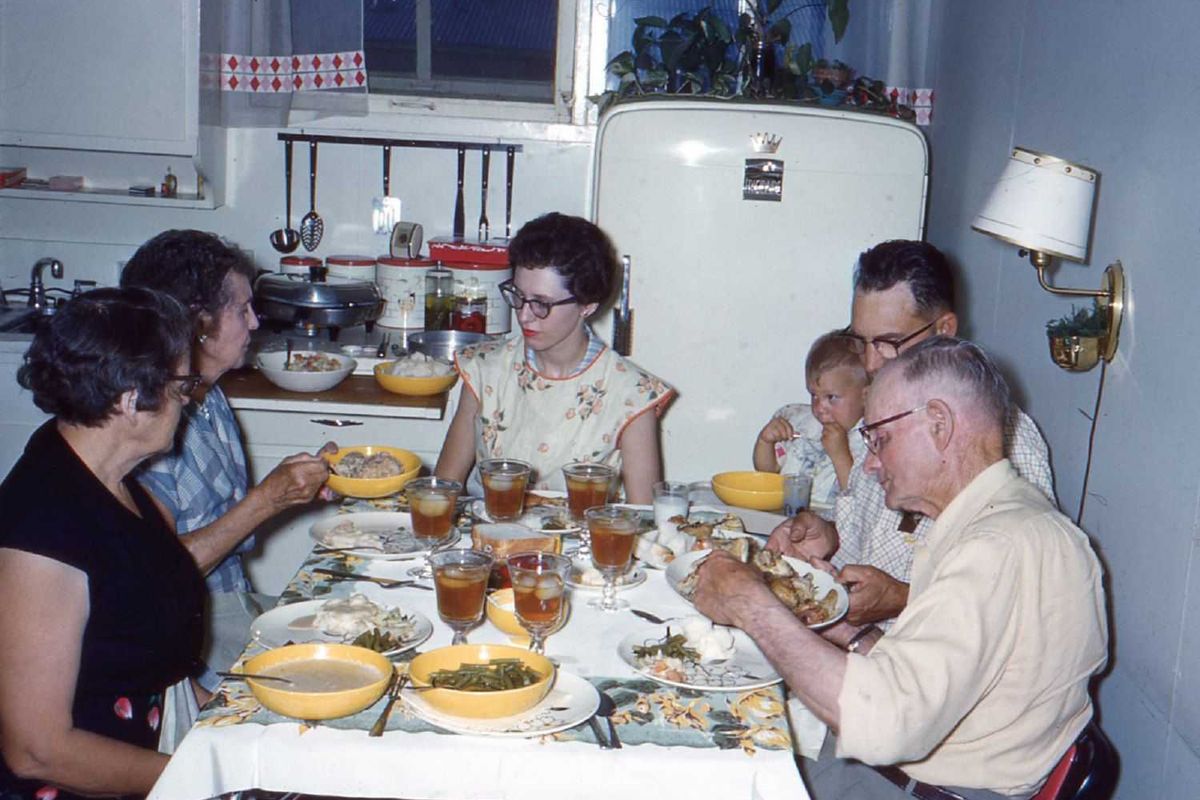Childhood dishes can take you straight back to your seat at the family dinner table. Comfort meals that were served there are uber nostalgic. And there is one dish represents the epitome of Gen X and baby boomer childhoods: casseroles.
These one-dish wonders were loaded with flavor and baked to perfection. Pulled straight from the oven to the dinner table, casseroles filled the house with the smell of unique home-cooked recipes.
And while most of us are eating casseroles today at Thanksgiving, Gen Xers and boomers grew up eating casseroles on the reg.
Here are 15 old-school casserole recipes that Redditors grew up eating, which are just as yummy today:
- YouTube www.youtube.com
Chicken casseroles
Fancy Fast Chicken casserole
"Fancy Fast Chicken is delicious and so simple. Line up chicken breasts in a casserole dish. Dump uncooked stuffing over top the chicken breasts. Pour Cream of Mushroom (Onion or chicken works too) and incorporate it into the stuffing. Top with cheese of your choice, and fried onions if you're inclined. Bake at 350 for 45min or until chicken is thoroughly cooked." - Applepoisoneer
Chicken Curry Divan casserole
"My favorite is Chicken Curry Divan. A friend made it for me in college 40 years ago and it is a favorite to this day. Never disappoints. Many people have asked me for the recipe over the years. My best friends kids now that they are grown have each approached me for it.
1 1/2 lbs chicken breast tenders cooked and cut into bite sized pieces
3 cups broccoli in bite sized pieces
2 cans Cream of Chicken soup
1 cup mayonnaise (must be Mayo)
2 tsp curry
Juice of 1 lemon
Shredded sharp cheddar (use the amount you like o like a nice even cover of the top)
3/4 cup crushed Ritz crackers
3 tbsp melted butter
In 9x13” baking pan layer chicken then broccoli.
Mix the soup, Mayo, lemon juice and curry together well, pour over chicken broccoli mixture evenly and smooth out. Sprinkle cheese over top evenly. Crush crackers fine, mix in melted butter well and sprinkle evenly over top. Cook at 375° for 25-30 minutes until bubbly and top brown. Serve with rice." - karinchup
Chicken and Rice casserole
"This baked rice & cheese casserole has become a staple in our house! It’s great as a side dish, or I’ll add rotisserie chicken and serve it as a main dish." - anchovypepperonitoni
Chicken & Dumplings casserole
"The secret of this is not to stir anything. That's what makes your dumplings. When you dish it out, you have your dumplings on top.
2 chicken breasts, cooked and shredded; 2 cups chicken broth; 1/2 stick of butter; 2 cups Bisquick mix; 2 cups whole milk; 1 can cream of chicken soup; 1/2 medium onion, minced; 1 cup frozen peas; 3 tsp chicken Better Than Bouillon; 1/2 tsp dried sage; 1 tsp black pepper; 1/2 tsp salt.
(1) Preheat oven to 350 degrees
(2) Layer 1 - In 9x13 casserole dish, melt 1/2 stick of butter. Spread shredded chicken over butter. Sprinkle black pepper and dried sage over this layer. Do not stir.
(3) Layer 2 - Sprinkle minced onions and peas over chicken
(4) Layer 3 - In small bowl, mix milk and Bisquick. Slowly pour all over chicken. Do not stir.
(5) Layer 4 - In medium bowl, whisk together 2 cups of chicken broth, chicken bouillon, and soup. Once blended, slowly pour over the Bisquick layer. Do not stir.
(6) Bake casserole for 30-40 minutes, or until the top is golden brown." - Superb_Yak7074
Chicken broccoli casserole
"I made chicken broccoli casserole last week and that's a favorite here. This is pretty close to how I do it." - gimmethelulz
- YouTube www.youtube.com
Potato casseroles
Funeral Potatoes
"The unfortunately named, funeral potatoes!" - IRLperson
Tater Tot casserole
"Tater tot casserole. My mom made this at least once a week when I was growing up, but she added a quart of green beans to make it a meal. If you brown your ground beef in a good size cast iron skillet, you only dirty up one pan to make it!" - hcynthia1234, upperwareParTAY
Breakfast casserole
"I’m making a breakfast casserole this morning for brunch later—a bag of frozen hash brown potatoes thawed, a pound of sausage sauteed with peppers and onions, a brick of cheese grated, eight eggs beaten with a bit of milk and cream and some salt and pepper. Layer in a casserole, ending with cheese. Bake around an hour at 375." - CWrend
Hamburger pie casserole
"One of my childhood favorites. Did not add vegetables or cheese though. This was an end of the month struggle meal that everyone loved." - DarnHeather
Shepherd's pie casserole
"Shepherd's pie : brown 1.5 lbs ground beef with half a chopped onion, salt and pepper, drain it and then spread into a 13x9 and stir a can of cream of mushroom soup into it. Spread a drained family size can of corn on top, use a container of prepared mashed potatoes for the top layer. Bake for a half hour at 350." - ExplanationLucky1143
- YouTube www.youtube.com
Noodle casseroles
Tuna casserole
"Love my mom's tuna noodle casserole: 1 bag broad egg noodles, 1 can cream of mushroom soup, 2 cans tuna, 1 cup frozen corn or 1 can kernel corn, 2 cups shredded sharp cheddar cheese, 1/2 cup seasoned bread crumbs, 1 tbsp celery salt
Cook noodles per package directions, drain, then place in a 13x9 casserole dish. Mix in cream of mushroom soup, tuna, corn, 1 cup of the cheddar cheese, and celery salt. Top the casserole with the remaining cheese and bread crumbs. Bake at 350 for 20 minutes or until done enough for you." - Pinkleton
Mock Stroganoff casserole
"Mock stroganoff - brown 1lb ground chuck. Mix in 8 oz sour cream and 1 can cream of mushroom. Add to 1 lb of cooked egg noodles. Season with black pepper. Extras - fresh mushrooms and/or onion cooked with the beef. Any precooked veggies of your choice, peas or broccoli work well. Splash of Worcestershire, soy sauce, or fish sauce. Garlic or onion powder. Parsley, thyme, or cilantro." - Nathan_Saul
Cabbage noodle casserole
"I have a quick cabbage and noodles that uses bagged cole slaw. Cook a bag of noodles. Put aside. Cut up a lb of bacon and a med onion. Cook in pan until bacon is slightly fried and onions are clear. Add cabbage(without carrots) let sit 10 min or so. Add to noodles. It's so easy." - conjas11
@allrecipesThanksgiving prep class is now in session! 🍂🧑🏫 If there's one thing you need to nail on the big day (other than the turkey, of course), it's Green Bean Casserole. This recipe tastes just like the one your grandmother used to make, if not even better! 😋 Continue reading or click the link in the @allrecipes bio to get the full recipe. Ingredients: 2 (15-ounce) cans cut green beans, drained 1 (10.5-ounce) can condensed cream of mushroom soup ¾ cup milk 1 (2.8-ounce) can French fried onions salt and ground black pepper to taste Directions: Gather all ingredients. Preheat the oven to 350 degrees F (175 degrees C). Mix green beans, condensed cream of mushroom soup, milk, and 1/2 of the fried onions in a 1.5-quart casserole dish. Bake in the preheated oven until heated through and bubbly, about 25 minutes. Sprinkle remaining onions on top and return to the oven for 5 minutes. Season with salt and pepper to taste. Let rest for a few minutes before serving. 🧑🍳: Nicole #thanksgiving #greenbeancasserole #greenbeans #thanksgivingsides
Vegetable casseroles
Green bean casserole
"This is the best green bean casserole recipe, it does use the canned onions but you make your own cream of mushroom and it's soooo good. I've made it on random weekends, it's not just a Thanksgiving food. I don't know much about older foods, I just really wanted to share that recipe."
Corn casserole
"Our family Corn custard doesn't have crackers but we double the recipe and there's never any left over. 2 eggs, 1 cup of sweetened condensed milk, 1/2 flour, 2 T soft butter, 1 tsp sugar, 1 can of creamed corn, 1 can of whole corn. Mix all together and bake in a 8x8 about 45 min at 350. Gotta have that!" - Psychological_Bat890






 Quiche
Quiche Cheese Fondue
Cheese Fondue Cheese Ball Appetizer
Cheese Ball Appetizer Green Bean Casserole
Green Bean Casserole Potatoes au Gratin
Potatoes au Gratin Crown Jewel Dessert
Crown Jewel Dessert Cocktail Weiners
Cocktail Weiners  Deviled Eggs
Deviled Eggs Ants on a Log
Ants on a Log Waldorf Salad
Waldorf Salad Pineapple Upside Down Cake
Pineapple Upside Down Cake Black Forest Cake
Black Forest Cake

 Look how cute!By Flickr user Thowra_uk - Flickr here, CC BY 2.0
Look how cute!By Flickr user Thowra_uk - Flickr here, CC BY 2.0 An energetic and purpose-driven dog, but English Foxhounds are just as loyal and loving as more popular breeds.ccoho/
An energetic and purpose-driven dog, but English Foxhounds are just as loyal and loving as more popular breeds.ccoho/
 Singing about love and ham with passion. 🎤🎶
Singing about love and ham with passion. 🎤🎶 Singer belting out notes with passion and wit.
Singer belting out notes with passion and wit.  Singer shines in a glittering performance with quirky lyrics.
Singer shines in a glittering performance with quirky lyrics. Singer on stage delivering a humorous misquote with passion.
Singer on stage delivering a humorous misquote with passion. Singer humorously reflects on aging with a mic in hand.
Singer humorously reflects on aging with a mic in hand. Singer in red lights with humorous text adaptation.
Singer in red lights with humorous text adaptation.